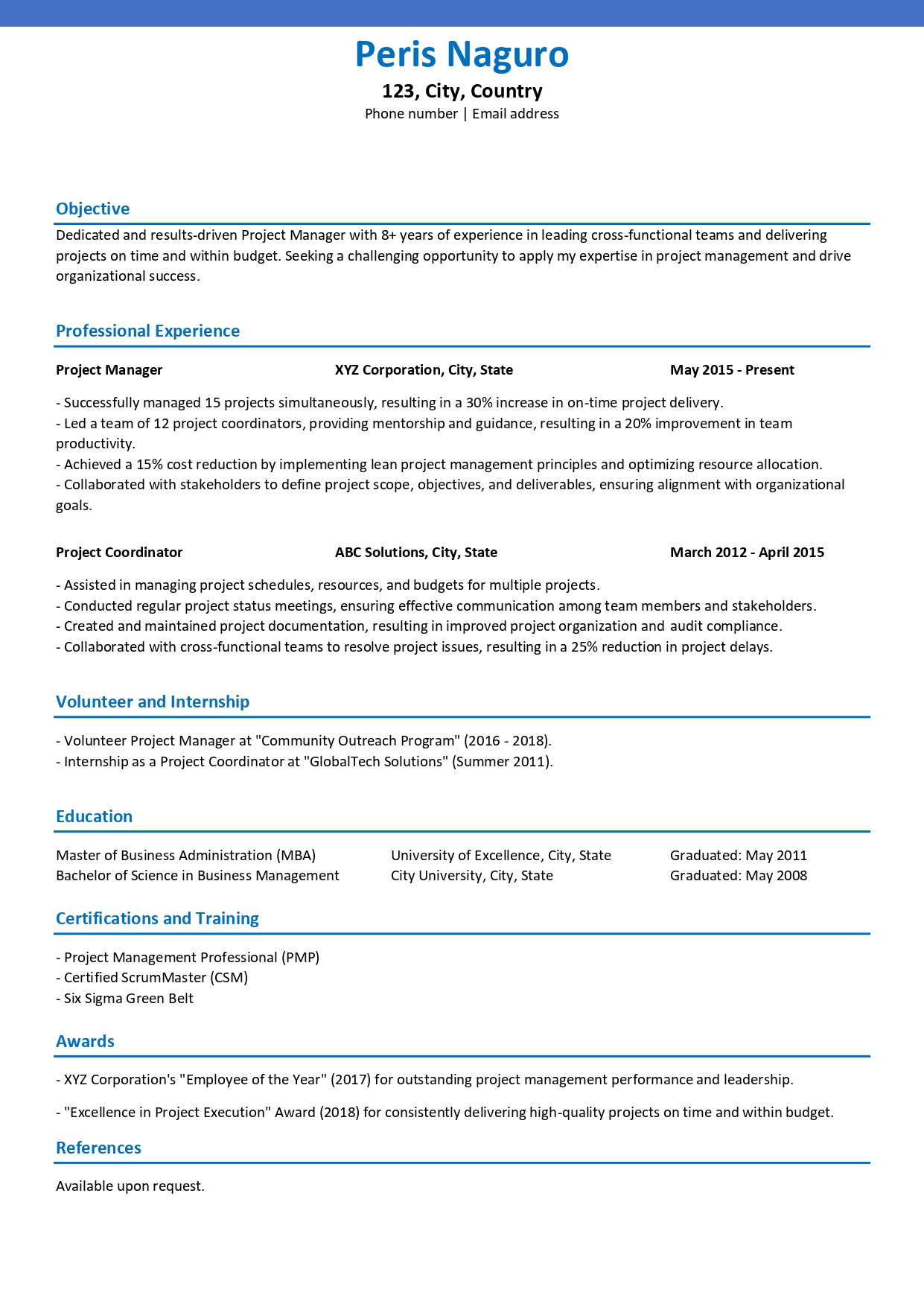When it comes to creating a powerful resume, the chronological format is one of the most popular and effective choices. In this comprehensive guide, we’ll walk you through the ins and outs of the chronological resume format, teach you how to write one, and even provide you with a sample to download.
Whether you’re just starting your career, transitioning to a new field, or a seasoned professional, a well-crafted chronological resume can make a significant difference in your job search.
What is the Chronological Resume Format?
The chronological resume, also known as the reverse-chronological resume, is a structured document that highlights your work history in reverse chronological order. This means your most recent job is listed first, followed by the previous one, and so on. The format is straightforward, making it easy for employers to understand your career progression.
How Do I Write a Chronological Resume?
Contact Information: Start your resume with your name, address, email, and phone number. Make sure it’s accurate and up-to-date.
Objective or Summary: Write a concise objective or summary statement that introduces you and your career goals. This section should grab the employer’s attention and make them want to keep reading.
Experience: List your work history in reverse chronological order. Remember to include the company name, job title, and dates of employment respectively. Beneath each job, describe your key responsibilities and achievements using action verbs and quantifiable accomplishments.
Education: Outline your educational background, including degrees, institutions, and graduation dates. If you have a strong work history, this section can be brief.
Professional Certifications and Training: Include all relevant certifications and training programs you’ve completed. This demonstrates your commitment to professional development.
Awards: If you’ve received any awards or recognitions related to your work, make sure to include them in this section.
Chronological Resume Format Sample
Here’s an example of a chronological resume:

Download Chronological Resume Sample in PDF
How Do I Tailor a Chronological Resume to a Specific Job Application?
Tailoring your resume is essential to match the job you’re applying for. Here’s how to do it:
- Review the Job Description: Carefully read the job posting to understand what the employer is looking for. Highlight the key requirements and skills.
- Customize Your Summary: Adjust your objective or summary to align with the specific job. Highlight how your experience matches the job description.
- Prioritize Relevant Experience: Emphasize the work experiences that are most relevant to the position you’re applying for. You can de-emphasize less relevant roles.
- Leverage Keywords: Integrate the keywords found in the job posting into your resume. This strategy enhances the likelihood of your resume successfully navigating applicant tracking systems (ATS) commonly employed by many employers.
- Highlight Matching Achievements: For each job, showcase achievements and responsibilities that demonstrate your ability to excel in the new role.
In conclusion, the chronological resume format is a tried-and-true method for presenting your work history and skills to potential employers. By following these steps and utilizing our sample, you can create a compelling chronological resume that not only showcases your qualifications but also helps you stand out in a competitive job market.
Download our sample, and start building your path to career success today.




